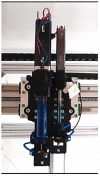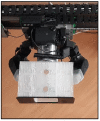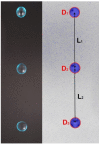Calibration Uncertainty of Non-Catching Precipitation Gauges
- PMID: 36080873
- PMCID: PMC9460570
- DOI: 10.3390/s22176413
Calibration Uncertainty of Non-Catching Precipitation Gauges
Abstract
Precipitation is among the most important meteorological variables for, e.g., meteorological, hydrological, water management and climate studies. In recent years, non-catching precipitation gauges are increasingly adopted in meteorological networks. Despite such growing diffusion, calibration procedures and associated uncertainty budget are not yet standardized or prescribed in best practice documents and standards. This paper reports a metrological study aimed at proposing calibration procedures and completing the uncertainty budgets, to make non-catching precipitation gauge measurements traceable to primary standards. The study is based on the preliminary characterization of different rain drop generators, specifically developed for the investigation. Characterization of different models of non-catching rain gauges is also included.
Keywords: calibration; measurement; non-catching gauges; precipitation; uncertainty.
Conflict of interest statement
The authors declare no conflict of interest.
Figures








References
-
- BIPM. IEC. IFCC. ILAC. IUPAC. IUPAP. ISO. OIML . The International Vocabulary of Metrology—Basic and General Concepts and Associated Terms (VIM) 3rd ed. OIML; Paris, France: 2012. [(accessed on 19 April 2022)]. JCGM 200. Available online: http://www.bipm.org/vim.
-
- BIPM. IEC. IFCC. ILAC. IUPAC. IUPAP. ISO. OIML Evaluation of Measurement Data—Guide for the Expression of Uncertainty in Measurement. JCGM 100. 2008. [(accessed on 11 May 2022)]. Available online: http://www.bipm.org/en/publications/guides/gum.html.
-
- Lanza L.G., Merlone A., Cauteruccio A., Chinchella E., Stagnaro M., Dobre M., Izquierdo G.C., Nielsen J.M., Kjeldsen H., Roulet A.Y., et al. Calibration of non-catching precipitation measurement instruments: A review. Meteorol. Appl. 2021;28:e2002. doi: 10.1002/met.2002. - DOI
-
- WMO—World Meteorological Organization In Proceedings of the First Virtual Session of the Commission for Observation, Infrastructure and Information Systems (INFCOM), Virtual Session, 9–13 November 2020. [(accessed on 20 May 2022)]. Available online: https://library.wmo.int/index.php?lvl=notice_display&id=21866.
-
- WMO—World Meteorological Organization . Guide to Meteorological Instruments and Methods of Observation. WMO; Geneva, Switzerland: 2017. WMO-N. 8.
MeSH terms
Grants and funding
- 18NRM03/Calibration and accuracy of non-catching instruments to measure liquid/solid atmospheric precipitation
- 10.13039/100014132/European Metrology Programme for Innovation and Research (EMPIR), co-financed by the Participating States and from the European Union's Horizon 527 2020 research and innovation programme
LinkOut - more resources
Full Text Sources

